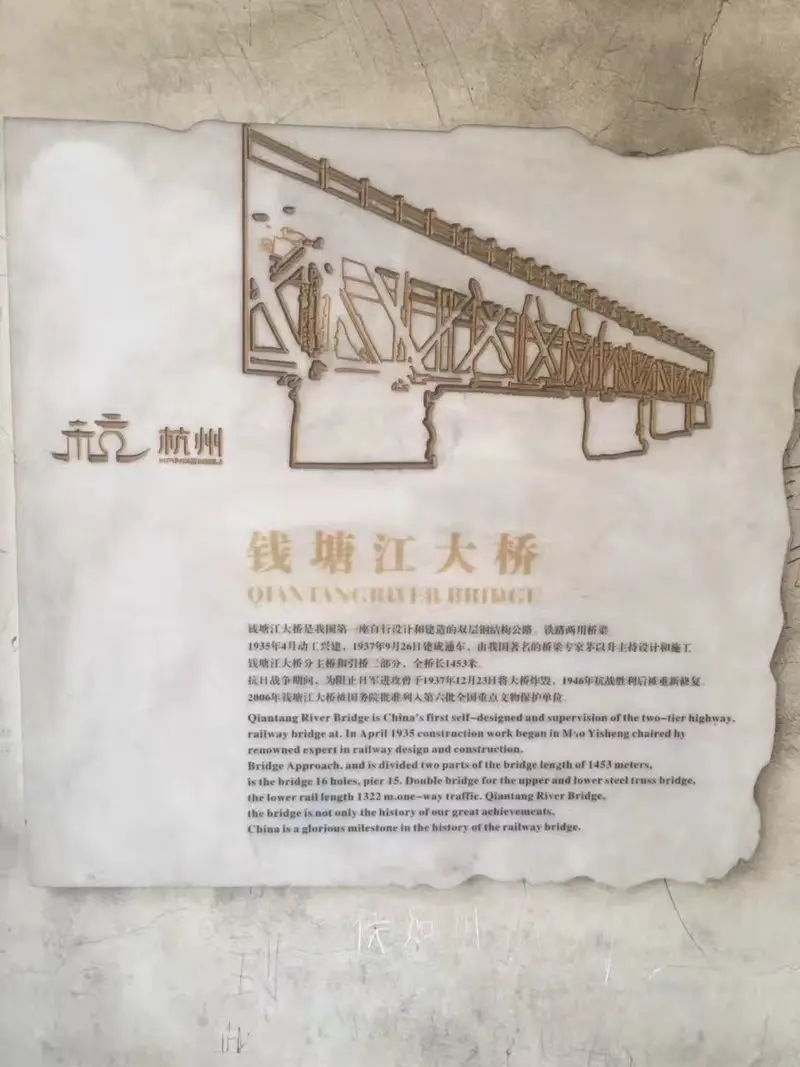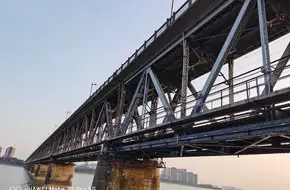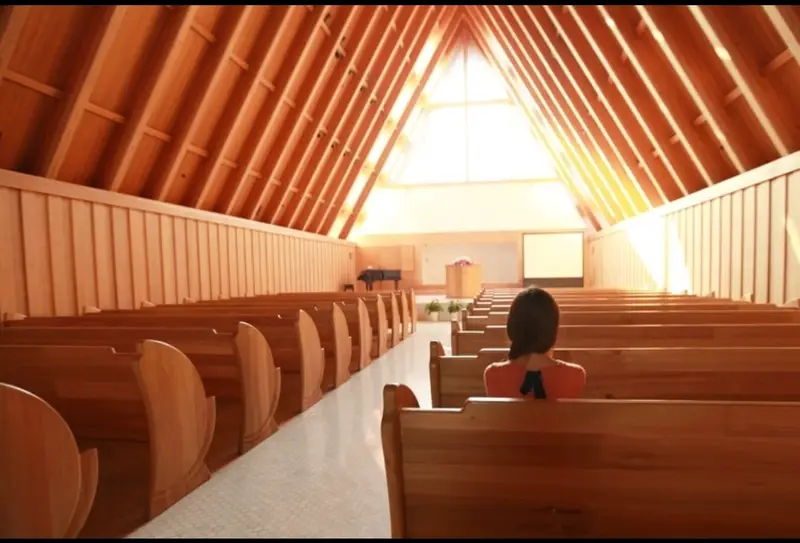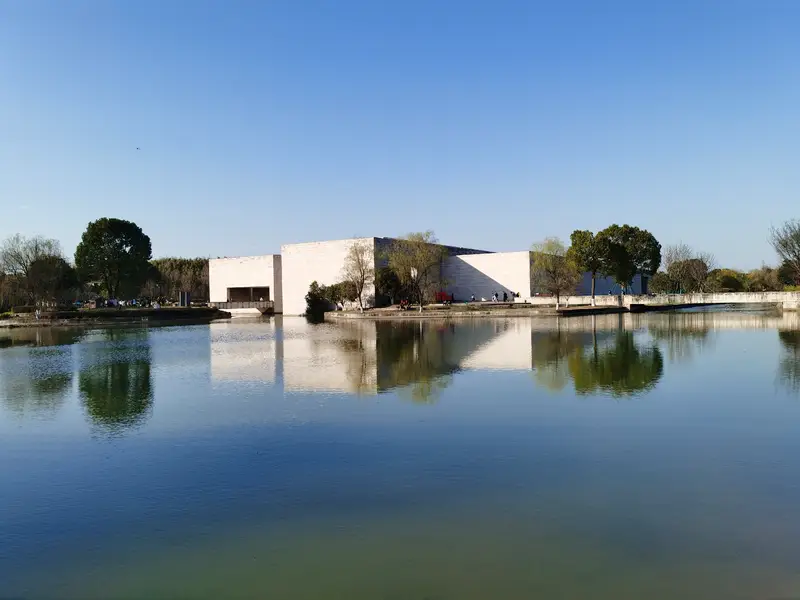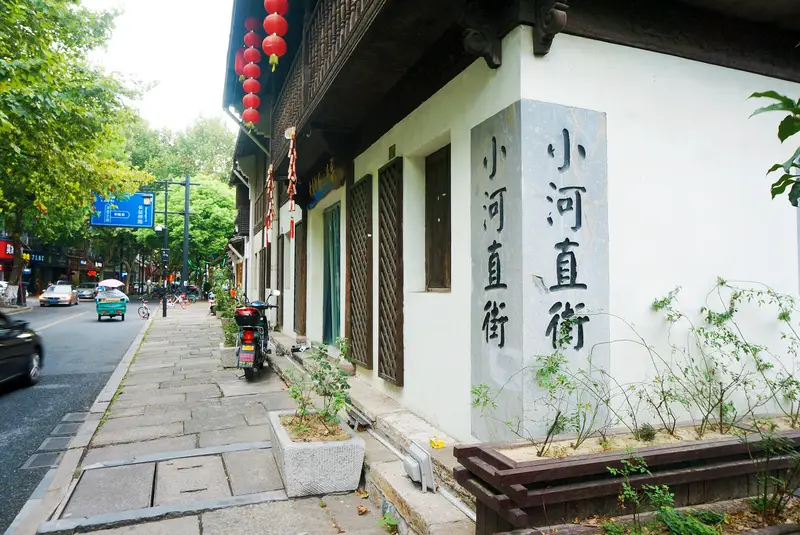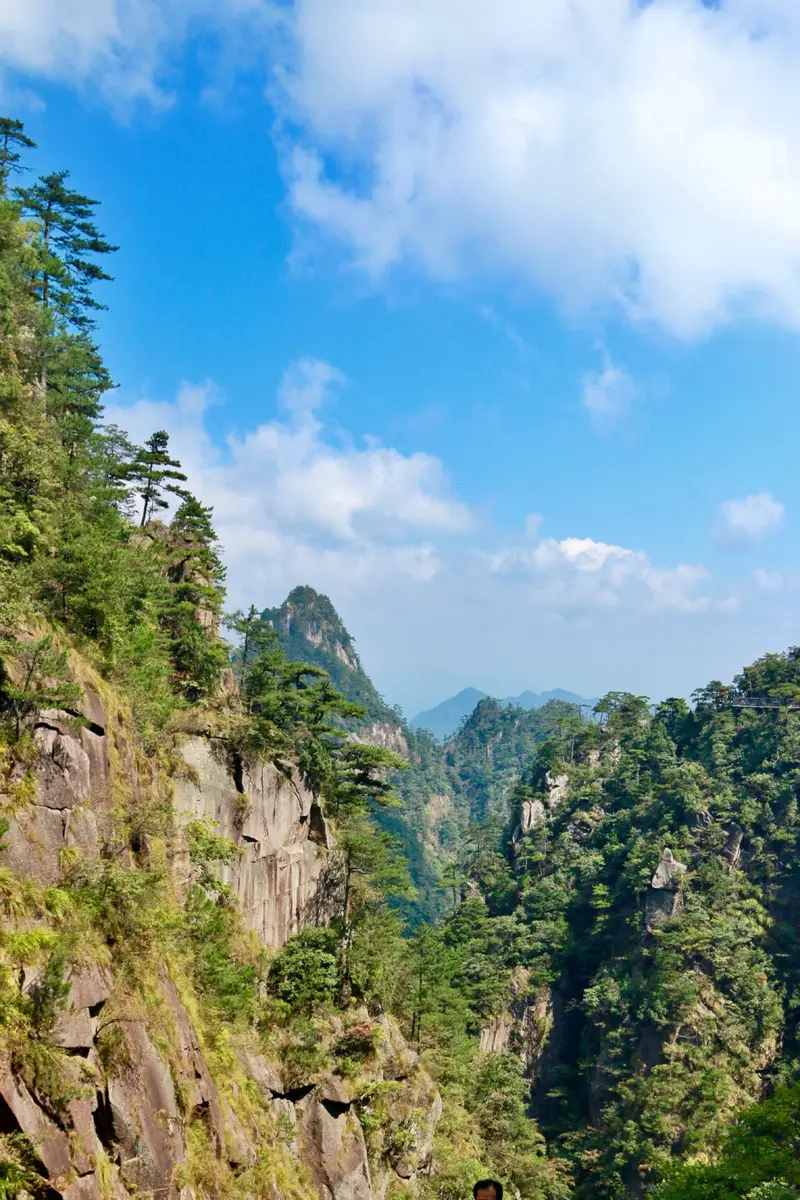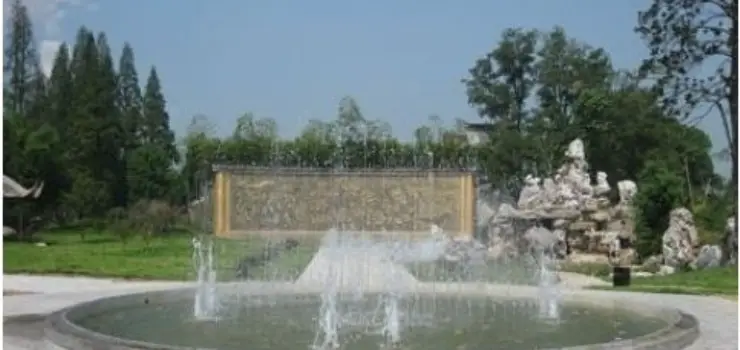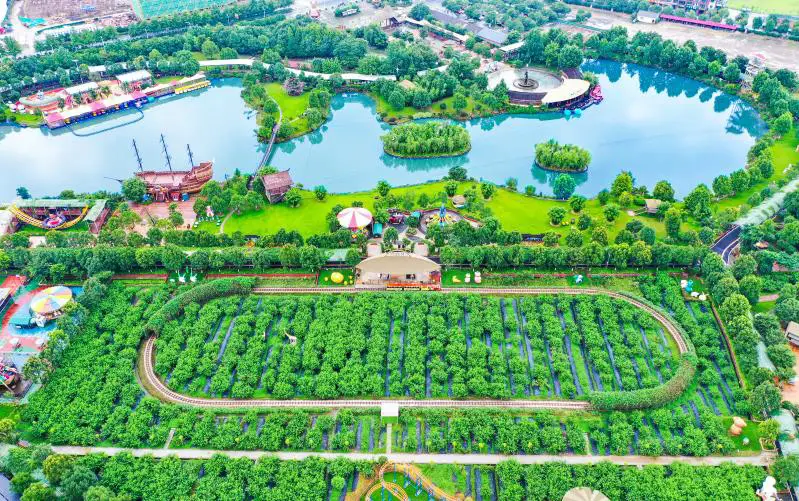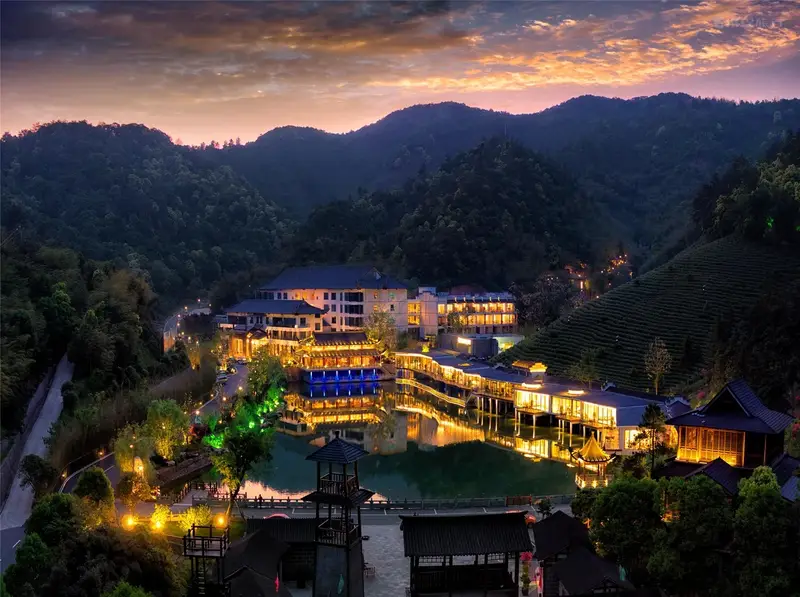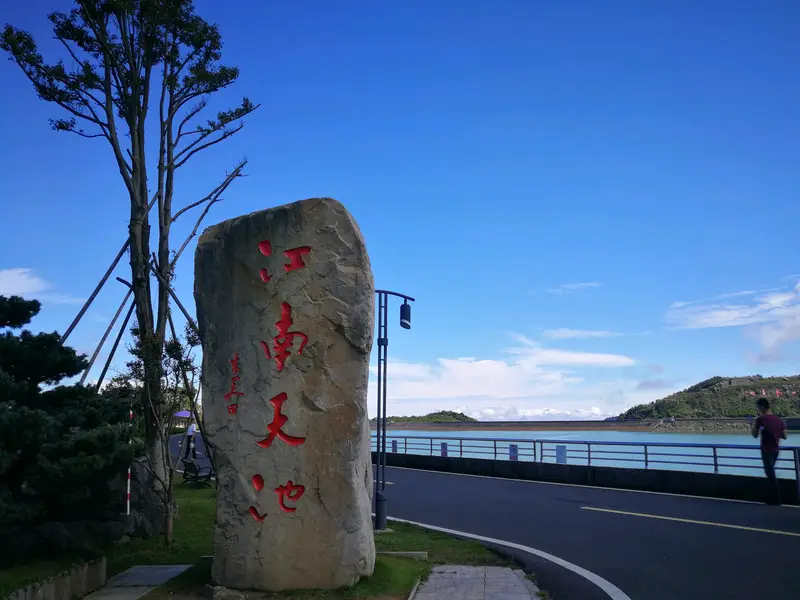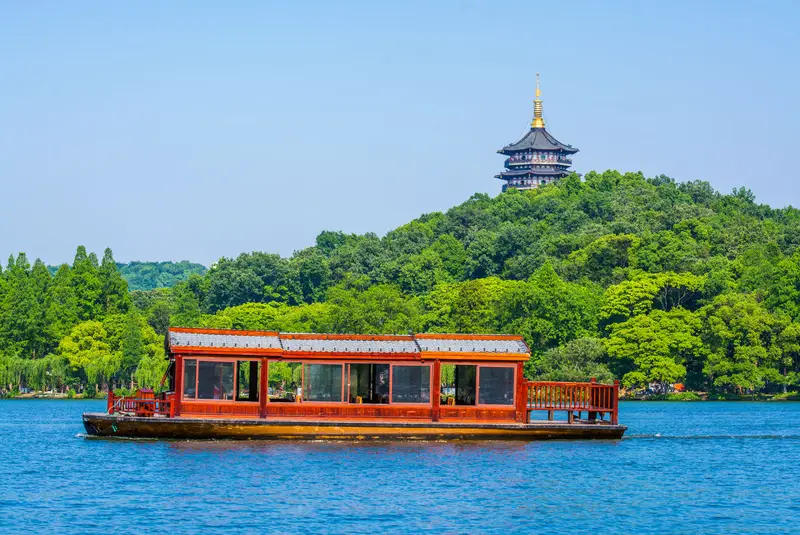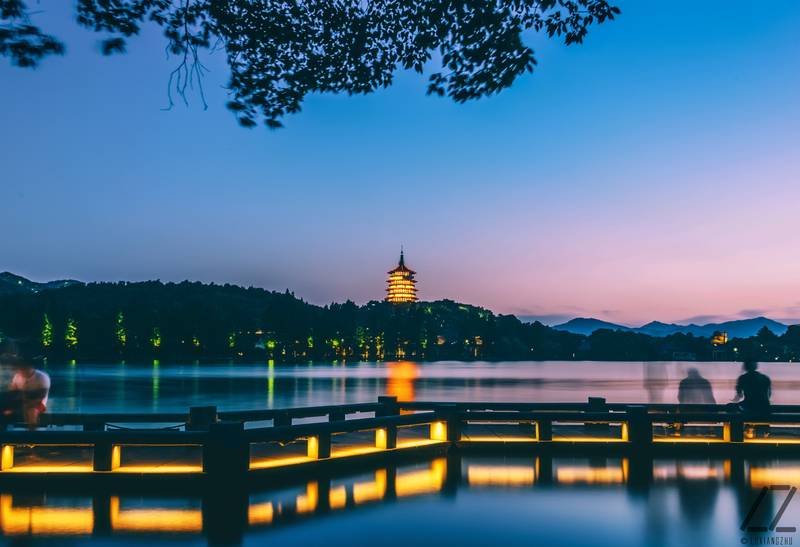Nestled at the north end of Qiantang River Bridge (Qiantang Jiang Yi Bridge) in Zhuantan Street, Xihu District, Hangzhou, the Qiantang River Bridge Memorial Museum sits right where history meets nature. This spot is easy to reach: if you’re coming from downtown Hangzhou, take Metro Line 4 to “Binjiang Station” and transfer to a taxi or bike—it’s about a 15-minute ride. Drivers can park near the bridge’s north toll gate, though spaces fill up fast on weekends. For a scenic approach, rent a bike and pedal along the riverside path; the bridge’s red-arched silhouette is hard to miss!
Natural Scenery: River, Sky, and Bridge
The museum’s setting is pure drama. The Qiantang River here flows wide and calm, framed by the iconic Qiantang River Bridge—a steel-and-concrete giant stretching into the horizon. Sunsets are magical: orange light reflects off the water, and the bridge’s towering arches cast long shadows. If you’re lucky, you might spot fishermen’s boats bobbing below or catch a glimpse of the famous Qiantang tides (though the best viewing spots are farther downstream). A small park next to the museum has benches where you can soak in the view while sipping tea from a nearby stall.
Human Stories: A Bridge Through Time
The Qiantang River Bridge isn’t just concrete—it’s packed with history. Built in the 1930s by Chinese engineer Mao Yisheng (whose name lives on in the museum), this was China’s first modern railway-road bridge. During World War II, the bridge played a key role: Japanese forces bombed it, but locals risked their lives to repair it. The museum’s exhibits—old photos, bridge models, and interactive screens—bring these stories to life. Don’t miss the documentary about the bridge’s construction; it’s like a mini-Masterpiece Theatre for engineering fans!
Practical Info: What to Expect
The Qiantang River Bridge Memorial Museum is compact but engaging. Entry costs around ¥20 (cash or mobile payment), and English signage is everywhere. Start at the ground-floor exhibits, which explain the bridge’s design using simple diagrams. The second floor focuses on wartime tales, with artifacts like rusty tools and soldiers’ letters. A small gift shop sells bridge-themed souvenirs (think mini models and postcards), and the café offers snacks with river views. Bathrooms are clean, and staff often lend out free audio guides.
Tips for Your Visit
Morning visits are best—fewer crowds and softer light for photos. Wear comfy shoes: the bridge itself has walkable paths with great photo ops. If you’re into Instagram, snap the bridge’s reflection in the water or pose under the “Hangzhou” sign near the museum entrance. History buffs should budget 2–3 hours; families might want to pair this with a trip to nearby Longjing tea fields for a full day out.
In short, the Qiantang River Bridge Memorial Museum is a hidden gem. It’s not as flashy as West Lake, but its blend of nature, engineering, and gritty history makes it worth a detour. Come for the bridge, stay for the stories—and don’t forget to wave at the river!


